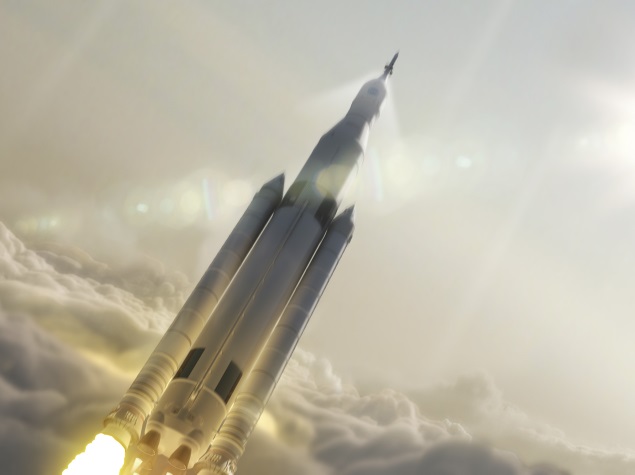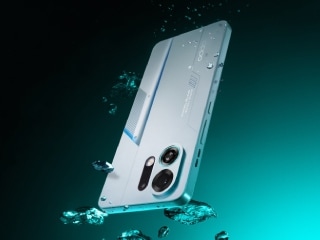- Home
- Science
- Science News
- SpaceX Cargo Ship Arrives at International Space Station
SpaceX Cargo Ship Arrives at International Space Station

Astronauts at the orbiting lab reached out with the space station's robotic arm to grasp the Dragon at 6:52 am (1052 GMT), Nasa said.
Germany's Alexander Gerst, an astronaut from the European Space Agency, operated the 57.7-foot (17.6-meter) robotic arm to capture the Dragon. He was assisted by Nasa astronaut Reid Wiseman.
The berthing operation will be complete when the vessel latches fully onto the research outpost, about two hours after the capture.
The Dragon capsule is carrying more than 5,000 pounds (2,200 kilograms) of supplies and material for science experiments, including a tool to measure wind speed at the ocean's surface.
The spacecraft launched early Sunday from Cape Canaveral, Florida, and is SpaceX's fourth contracted mission with Nasa for supply trips to the ISS and back.
The lab mice are the first live mammals to hitch a ride aboard a commercial cargo ship, and they are enclosed in a Nasa-made research cage for studying the effects of weightlessness on their bodies.
The 3D printer is the first of its kind to demonstrate how the technology can be used in space, even without gravity to assist the process.
The spacecraft will stay at the ISS for about a month as astronauts unload its cargo and repack it with 3,200 pounds (1,450 kilograms) of material to return to Earth.
In 2010, SpaceX became the first private company to send a spacecraft to the ISS.
The company is run by Internet mogul Elon Musk, who accumulated his fortune by co-founding PayPal. He also runs Tesla Motors.
Orbital Sciences Corporation has also contracted with Nasa to send its Cygnus cargo ship to the space station, but unlike the Dragon, which can return to Earth intact, the Cygnus burns up on re-entry to Earth's atmosphere.
Last week, SpaceX was awarded a $2 billion contract from Nasa to continue developing its Dragon V2 vehicle with the goal of sending people to the space station as early as 2017.
Boeing won a larger Nasa contract, for more than $4 billion, for the development of its CST-100 crew vehicle.
Nasa lost its ability to reach the space station when the shuttle program ended in 2011 after 30 years.
The US space agency has helped fund private companies in the race to restore US access to the ISS.
In the meantime, the world's astronauts must rely on Russia's Soyuz spacecraft to get to the ISS and back, at a cost of $70 million per seat.
Get your daily dose of tech news, reviews, and insights, in under 80 characters on Gadgets 360 Turbo. Connect with fellow tech lovers on our Forum. Follow us on X, Facebook, WhatsApp, Threads and Google News for instant updates. Catch all the action on our YouTube channel.
Related Stories
- Samsung Galaxy Unpacked 2025
- ChatGPT
- Redmi Note 14 Pro+
- iPhone 16
- Apple Vision Pro
- Oneplus 12
- OnePlus Nord CE 3 Lite 5G
- iPhone 13
- Xiaomi 14 Pro
- Oppo Find N3
- Tecno Spark Go (2023)
- Realme V30
- Best Phones Under 25000
- Samsung Galaxy S24 Series
- Cryptocurrency
- iQoo 12
- Samsung Galaxy S24 Ultra
- Giottus
- Samsung Galaxy Z Flip 5
- Apple 'Scary Fast'
- Housefull 5
- GoPro Hero 12 Black Review
- Invincible Season 2
- JioGlass
- HD Ready TV
- Laptop Under 50000
- Smartwatch Under 10000
- Latest Mobile Phones
- Compare Phones
- Huawei Nova 15
- Huawei Nova 15 Pro
- Huawei Nova 15 Ultra
- OnePlus 15R
- Realme Narzo 90x 5G
- Realme Narzo 90 5G
- Vivo S50 Pro Mini
- Vivo S50
- Asus ProArt P16
- MacBook Pro 14-inch (M5, 2025)
- Huawei MatePad 11.5 (2026)
- OnePlus Pad Go 2 (5G)
- OnePlus Watch Lite
- Just Corseca Skywatch Pro
- Acerpure Nitro Z Series 100-inch QLED TV
- Samsung 43 Inch LED Ultra HD (4K) Smart TV (UA43UE81AFULXL)
- Asus ROG Ally
- Nintendo Switch Lite
- Haier 1.6 Ton 5 Star Inverter Split AC (HSU19G-MZAID5BN-INV)
- Haier 1.6 Ton 5 Star Inverter Split AC (HSU19G-MZAIM5BN-INV)
















